In the web development world, things move fast. The traditional Content Management System (CMS) setup used to be king, but times have changed. Businesses and their customers now have more intricate needs and expectations. To keep pace, a new champion has emerged: the Headless CMS, or Headless Content Management System.
We will dives into the world of Headless CMS, explaining what it is and why the name "headless" perfectly captures its essence. Buckle up and get ready to learn more!
What is a Headless CMS?
A headless CMS is a content management system that separates the content presentation layer from the backend, where the content is managed. This setup allows you to manage content in one central place and deploy it across any digital platform you choose.By decoupling the frontend from the backend, a headless CMS makes it easier for marketers to handle content independently and for developers to work more efficiently, automate updates, and manage digital assets at scale. In contrast, a traditional CMS ties content closely with code, often making it difficult to reuse content or create modern digital experiences.For example, if you run a blog and a mobile app, you can write your articles once in a headless CMS, and send that same content to both your website and app without having to duplicate or redesign it each time. So regardless of your audiences' technologies and touchpoints, they will always get to see the same up-to-date articles.>>Read more: Unveiling the Power of Headless CMSBenefits of Headless CMSes
Gone are the days of clunky, one-size-fits-all content management systems. Headless CMS offers a modern approach, empowering businesses to create exceptional digital experiences while boosting SEO performance. Below are some key advantages that could help quicken your workflow:
1. Unmatched Flexibility and Speed
Headless CMS breaks free from the limitations of traditional CMS with pre-built templates. Developers can leverage their expertise in any programming language or framework, resulting in:- Bespoke user interfaces (UIs): Craft unique and dynamic UIs that perfectly reflect your brand identity and user needs.
- Swifter development cycles: Streamlined development processes lead to faster time-to-market for new features and functionalities.
- Enhanced SEO performance: Developers have greater freedom to optimise code structure and seamlessly integrate SEO best practices.
2. Content Everywhere, Perfectly Optimised
Headless CMS separates content from presentation. You are only required to create content once, then effortlessly distribute it across various channels, including:
- Websites
- Mobile apps
- Social media platforms
- Email marketing campaigns
- Smart displays
This ensures consistent brand messaging and a unified user experience across all touchpoints.
Imagine creating a blog post and effortlessly repurposing it for social media snippets, an infographic, or even a video script. Headless CMS makes this content reusability a breeze.>>Read more: Headless CMS with Gatsby, React and WordPress Technology3. Ready for Growth, Whatever Your Size
Headless CMS architecture is designed to handle massive content volumes and high traffic. This makes it ideal for:- Thriving businesses: Easily scale your content management as your company expands.
- Enterprise-level applications: Manage complex content requirements with robust performance and security features.
4. Cost-Effectiveness
Headless CMS offers significant cost benefits compared to traditional CMS:- Reduced development time: Eliminate the need to build and maintain separate content experiences for each platform.
- Content reusability: Repurpose content across channels, saving time and resources on content creation.
5. Security You Can Trust
Headless CMS prioritizes robust security measures, including:- API security features: Secure data transfer with built-in API security protocols.
- Role-based access control: Grant access to specific users and teams, ensuring data integrity.
Disadvantages Of Using A Headless CMS
Headless CMS offers a breath of fresh air for content management, but it's not without its quirks. Here's a look at some hurdles you might encounter:
1. No Previews
Unlike traditional CMS with built-in previews, some headless CMSes lack a set front-end. This means work managers and editors can't see a live preview of their content before publishing. Formatting issues might crop up at launch.
2. No Drag-and-Drop Magic
Headless CMS ditches the familiar drag-and-drop approach in favour of pre-built front-end components. While it might seem intimidating at first, this offers greater flexibility in the long run. Platforms like Hygraph empower content creators with a rich editing experience (versioning, previews, staging) without sacrificing customisation.
3. No Ready-Made Themes
As a backend-only system, headless CMS doesn't come with pre-built themes or templates. This grants you creative freedom, but also means designing the entire user interface. To achieve this, a skilled development team is necessary.
3. Complex Setup for Newbies
Some headless CMSes can be daunting for beginners or non-technical content managers. Companies might need a development team or an agency on board before diving in. While the reduced reliance on developers was a key driver for CMS creation, the initial setup of a headless CMS still requires extensive developer involvement.
However, once the initial configuration is complete, your marketing team should be able to create and update web and mobile app content (landing pages, knowledge bases, product promotions) independently.
Headless CMS vs. Traditional CMS
Here's a comparison of Headless CMS and Traditional CMS, highlighting the key differences between the two:
Feature
Headless CMS
Traditional CMS
Architecture
Decoupled frontend and backend
Coupled frontend and backend
Flexibility
Highly flexible, can deliver content to any platform
Less flexible, content delivery is tied to the system's templates
Development
Developers can use any frontend technology
Limited to the technologies and templates provided by the CMS
Content Management
Content is managed independently from its presentation
Content and presentation are intertwined
Scalability
Easily scalable for different platforms and devices
More challenging to scale due to tight coupling
Performance
Often better performance due to separate frontend optimizations
May have performance issues due to integrated architecture
Use Case Suitability
Ideal for multi-channel and modern web applications
Suitable for simpler websites with less complex requirements
SEO and Customization
Offers extensive customization and advanced SEO options
Limited customization; SEO options are less flexible





